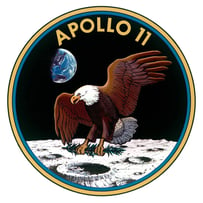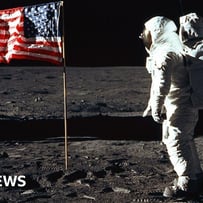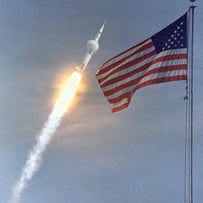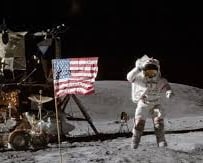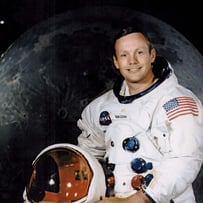One Giant Leap for Mankind: Humanity Walks on the Moon
Apollo 11 Makes History as Neil Armstrong Steps Onto Lunar Surface
GOAT NEWSTECHNOLOGYWORLDSPACE
Hindvarta Desk
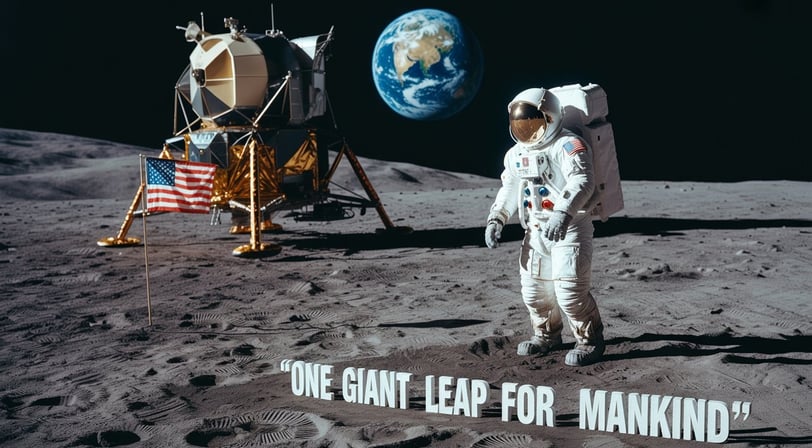

July 20, 1969 – Sea of Tranquility, The Moon
The world stood still. Radios crackled, televisions flickered, and hearts pounded across continents as a human voice echoed from beyond Earth:
“That’s one small step for man, one giant leap for mankind.”
With those immortal words, astronaut Neil Armstrong, commander of NASA’s Apollo 11 mission, became the first human to set foot on the Moon, marking a defining moment in history and the culmination of humanity’s boldest technological endeavor.
A Race Beyond Earth
The Moon landing was the climax of the Space Race—a high-stakes geopolitical and scientific rivalry between the United States and the Soviet Union during the Cold War era. After the Soviet Union shocked the world by launching Sputnik in 1957 and sending the first human, Yuri Gagarin, into space in 1961, the U.S. knew it had to respond.
In 1961, U.S. President John F. Kennedy declared:
“I believe that this nation should commit itself to achieving the goal, before this decade is out, of landing a man on the Moon and returning him safely to the Earth.”
Just 8 years later, America delivered on that promise.
Mission Apollo 11: Earth’s Greatest Voyage
The Apollo 11 spacecraft was launched from Cape Kennedy (now Cape Canaveral) on July 16, 1969, atop the towering Saturn V rocket—the most powerful rocket ever built.
The crew:
Neil Armstrong, Mission Commander
Buzz Aldrin, Lunar Module Pilot
Michael Collins, Command Module Pilot (remained in lunar orbit)
After a four-day journey, Apollo 11 entered lunar orbit on July 19. The next day, the Lunar Module "Eagle" detached from the Command Module and began its descent to the Moon’s surface.
“The Eagle Has Landed”
At 4:17 PM Eastern Time, July 20, the world heard Armstrong’s calm voice:
“Houston, Tranquility Base here. The Eagle has landed.”
The module touched down in an area known as the Sea of Tranquility. Just hours later, at 10:56 PM, Armstrong descended the ladder, planted his foot into lunar soil, and entered history.
Soon after, Buzz Aldrin joined him, calling the surface “magnificent desolation.” For 2 hours and 15 minutes, the astronauts explored the surface, collecting rock samples, taking photographs, and setting up scientific instruments.
🇺🇸 A Moment Shared by the World
The Moon landing was broadcast live to over 600 million people—the largest global television audience at the time. Across the globe, from India to Egypt, from New York to Nairobi, people gathered around screens and radios, united by awe and wonder.
Armstrong and Aldrin planted an American flag, but made it clear this was not just a U.S. triumph. A plaque left behind on the Moon read:
“Here men from the planet Earth first set foot upon the Moon. July 1969 A.D. We came in peace for all mankind.”
Return and Legacy
After 21 hours on the lunar surface, Armstrong and Aldrin returned to the Lunar Module, rejoined Collins in orbit, and the three astronauts safely returned to Earth on July 24, splashing down in the Pacific Ocean.
They were welcomed as heroes and underwent 21 days of quarantine. The mission not only proved that humans could visit another world and return but paved the way for future space exploration.
Science, Symbolism, and Spirit
Apollo 11 was more than a political victory—it was a monument to human ingenuity, scientific cooperation, and the unyielding pursuit of the unknown. The mission delivered over 20 kilograms of lunar rocks, helped scientists better understand the Moon’s geology, and set the stage for future NASA missions.
But perhaps more importantly, it redefined what was possible for humanity.
The World Reflects
In India, newspapers hailed it as “the triumph of the modern world.”
In the USSR, though rivals in space, state media acknowledged the “technical brilliance” of the mission.
In Kenya, local schoolchildren wrote poems about touching the stars.
This wasn’t just an American success—it was a victory for the human race, proving that even our most impossible dreams could be realized through courage, collaboration, and relentless pursuit.
Lasting Impact
In the decades since 1969:
NASA launched six Moon missions in total (Apollo 11 to Apollo 17).
Neil Armstrong, Buzz Aldrin, and Michael Collins became global icons.
The Moon landing inspired generations of scientists, engineers, artists, and dreamers.
Armstrong passed away in 2012, Collins in 2021—but their legacy lives on.
In 2025 and beyond, as the world prepares for NASA’s Artemis missions to the Moon and eventually Mars, we look back at Apollo 11 as the moment humanity first looked outward—and stepped forward.
🌍 “We came in peace for all mankind.”
— Plaque left by Apollo 11 on the Moon, 1969

